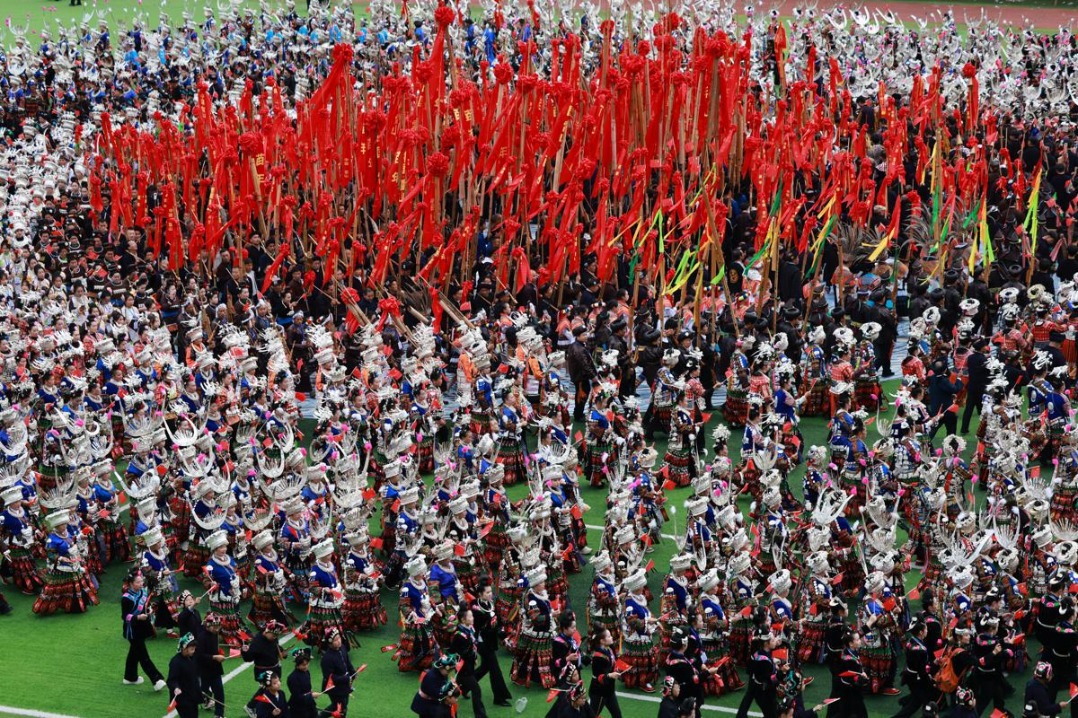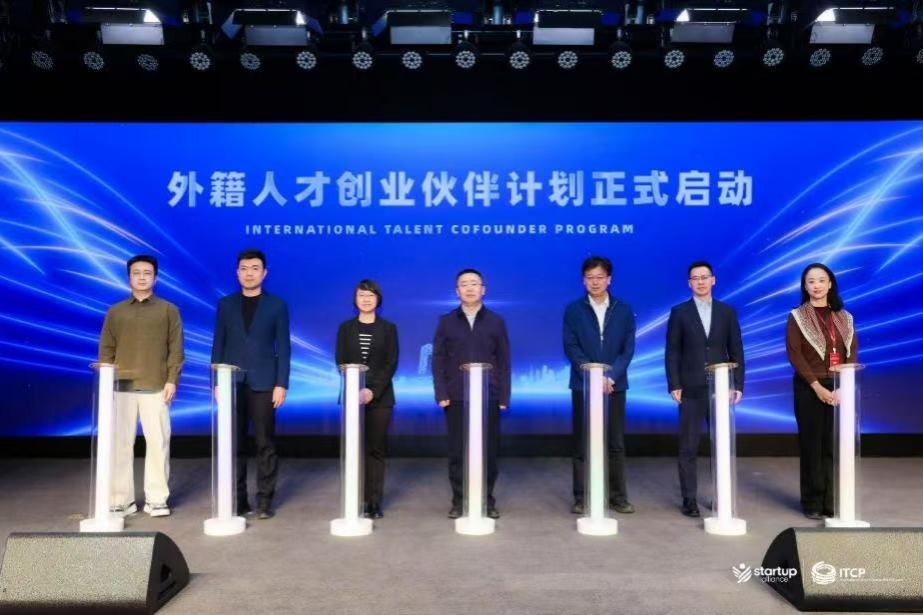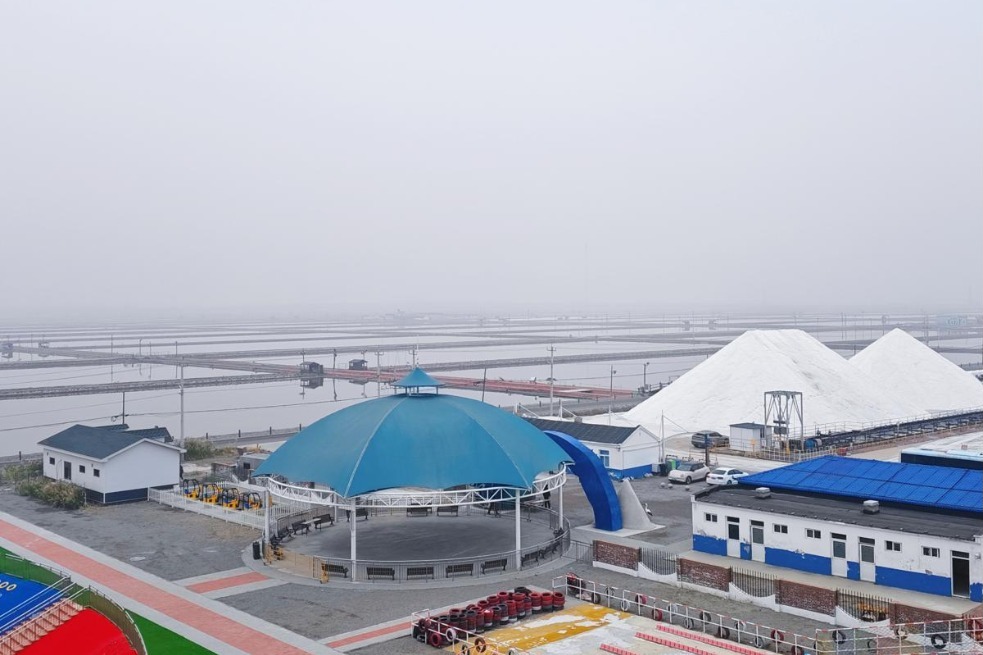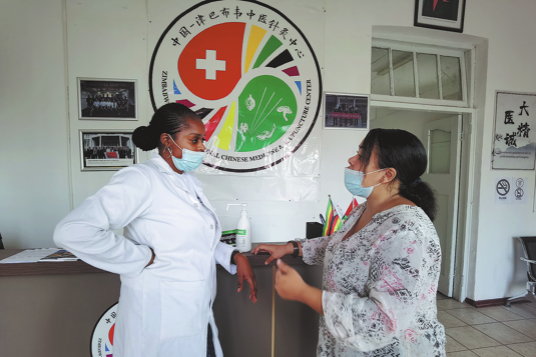Forest farm lauded for poverty relief efforts


At the gleaming Great Hall of the People in downtown Beijing, forestry worker An Changming strode toward the center stage amid thunderous applause.
On behalf of generations of tree-planters at the Saihanba Machinery Forest Farm, he received a gilded plaque from Xi Jinping, general secretary of the Communist Party of China Central Committee.
The plaque is inscribed "National Model for Poverty Alleviation", an honorary title that central authorities in February bestowed on dozens of front-line organizations and individuals involved in the country's decadeslong poverty fight.
"The title was earned by the hard work of three generations of the Saihanba people," said An, 52, Party chief of the State-owned forest farm in Hebei province. "I am among the second generation."
A longtime forestry official in the province, An was appointed deputy director of the farm in 2006. He was later promoted to be its Party chief and led a campaign to advance the greening efforts that his predecessors started in 1962.
Under An's leadership, ecological improvements at the farm have increasingly resulted in financial gain-largely through tourism and nursery stock-and have shored up local income.
Figures offered by the farm showed that forestry workers earn an average of 100,000 yuan ($15,400) a year. The farm has created about 40,000 jobs and has helped 22,000 farmers escape poverty.
"We used to be recognized for ecological reasons, but this time we won for the poverty-curbing effect (of the forest farm)," he said.
"That's proof that 'clear waters and lush mountains are invaluable assets'," he added, citing a maxim coined by Xi in 2005 when he was Party secretary of Zhejiang province.
Zou Jianming, who is a third-generation Saihanba resident and has worked at the farm for 11 years, said his father, who also works at the farm, has told stories of how the employees lived in tents and had no access to electricity during the 1980s. In addition, the wells would freeze solid during harsh winters, when fresh vegetables were luxuries.
Increased revenue from the farm in recent years has led to better working conditions.
"Deep in forests, workers now have electricity, television signals and internet access," he said.
The Saihanba farm, on the province's northern tip, was a bountiful royal hunting ground during the Qing Dynasty (1644-1911) but turned into a sprawling desert because of excessive logging.
In 1962, a total of 369 forest workers from 18 provincial regions across the country arrived in the Saihanba region. Droves of workers later followed.
Official figures show the farm's afforested area almost quintupled over the past 59 years, rising from about 16,000 hectares to 76,700 hectares.
The local forest coverage rate jumped from just 11.4 percent to 82 percent during that period.
The mind-boggling effort to afforest Saihanba has turned a sprawling desert on the province's border with the Inner Mongolia autonomous region into a sea of trees, winning the farm the United Nations Environment Program's Champions of the Earth Award in 2017.
An said the transformation is a result of the Party's leadership.
"In the forest farm's early days, many Party members relocated their families from Beijing and other big cities to Saihanba, and that reassured many other workers," he said.
"Many of the first-generation workers were promoted to forestry authorities at both the provincial and national levels, and that is a sort of recognition of their achievements," he added.
Weichang Manchurian and Mongolian autonomous county, An's hometown, is a forestry stronghold in Hebei.
Like many locals, he studied the science of planting and caring for forests at Hebei Forestry College, the predecessor of today's Agricultural University of Hebei, and became a forestry official in Weichang.
It was not until 2006 that he was transferred to the forest farm in Saihanba.
In 2012, the forest farm ushered in a new era.
The decadeslong effort has greened almost all afforestable places, thus prompting An to focus on transforming dry or rocky terrain, where the cost of planting trees is more than three times the 4,500 yuan per hectare standard set by the national government.
To make up for the shortfall, he has been using money generated by tourism and the nursery business in hopes that better scenery will result in more revenue.
"With the increasing number of visitors, we are thinking about how to make the local tourism industry stronger," he said.
The work was easier said than done.
"Some places are hard to reach using machines, so we need to use donkeys to carry the saplings and water," An said.
By last year, the total assets had reached 20.6 billion yuan, and annual revenue about 160 million yuan, according to farm data.
Zou said: "Local people are saying Saihanba is becoming famous. They are the beneficiaries of the ecological improvements, and their awareness of environmental protection is growing."
- Countdown to 15th National Games: On-site warm-up entertains audience
- Eight missing after cargo ship collides with fishing vessel near Shandong
- Investing in people: a worthwhile investment
- Exhibition commemorating the epic relocation of universities opens in Fujian
- Twelve punished for scaffold collapse that killed 7 in Shandong
- Slovenian official visits whole-process people's democracy practice site of CPPCC committees





































